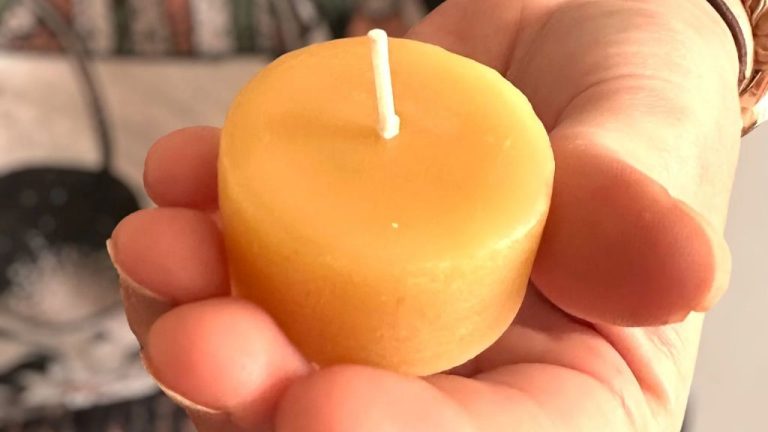Is Wax Made Out Of Oil?
What is wax?
Wax is a broad term used to describe a general group of organic compounds that become malleable between certain temperature ranges. According to the Wax definition, wax exhibits properties of solidity and plasticity under certain conditions.
There are many different types of natural waxes, such as beeswax, which is produced by honey bees. Beeswax has a high melting point and is used in products like candles and cosmetics. Other natural waxes include carnauba wax from palm leaves and lanolin from wool.
Synthetic waxes are artificially created and optimized for specific uses. Common synthetic waxes include paraffin wax made from petroleum, microcrystalline wax, polyethylene wax, and Fischer-Tropsch wax. These wax types have specialized properties like melting point, hardness, and viscosity that make them suitable for products like candles, polishes, and lubricants.
What is oil?
Oil is a viscous, hydrocarbon-based liquid that can occur naturally or can be synthetically produced. There are several types of natural oils that originate from plants or animals, such as:
- Olive oil – extracted from olives and commonly used in cooking
- Coconut oil – extracted from coconuts and has many culinary and cosmetic uses
- Palm oil – derived from the fruit of oil palms and used for cooking, soaps, cosmetics
Synthetic oils are artificially created oils that are formulated for specific applications. Some common types include:
- Motor oil – used to lubricate combustion engines (cite: https://www.castrol.com)
- Hydraulic oil – used in hydraulic systems and hydrostatic transmissions
- Gear oil – lubricates gears and other moving parts
Both natural and synthetic oils have a wide range of uses and applications thanks to their lubricating, cooling, and protective properties.
The Chemistry of Wax
Wax is made up of long-chain fatty acids and long-chain alcohols (Wikipedia 2023). The fatty acids typically contain between 12 and 32 carbon atoms. The length of the fatty acid chain affects the melting point – longer chains result in higher melting points. Some common fatty acids found in waxes include lauric acid, myristic acid, palmitic acid, stearic acid, and oleic acid (Chem LibreTexts 2022).
The alcohols in waxes are also long-chain, containing anywhere from 20 to 30 carbon atoms. Examples include octacosanol, triacontanol, and pentacosanol. The combination of a long-chain fatty acid plus a long-chain alcohol forms an ester, which is the main component of waxes (Chem LibreTexts 2022).
The ester linkages in wax molecules form straight chains that can stack tightly together and form crystals, giving wax its solid structure at room temperature. The crystalline structure makes wax more rigid and brittle compared to oils. The chemical composition and shape of wax molecules determine its physical properties like hardness, melting point, flexibility, solubility, and viscosity (Wikipedia 2023).
The chemistry of oil
Oil is composed of many different hydrocarbons, primarily made up of hydrogen and carbon atoms. Crude oil itself contains thousands of different hydrocarbon compounds (Types of Oil | US EPA). The exact composition varies based on the source of the crude oil, but the majority of compounds fall into the alkane, cycloalkane, and aromatic hydrocarbon classes.
The backbone of most oil molecules consists of chains of carbon atoms, with hydrogen atoms attached. The hydrocarbon compounds in oil can vary from simple gaseous forms like methane (CH4), to liquid forms containing 5-12 carbon atoms per molecule, to high molecular weight compounds. The ratios and specific hydrocarbons present depend on factors like pressure, temperature, and biological activity when the oil was formed (Chemical Constitution of Crude Oil | FSC 432 – Dutton Institute).
Structurally, the molecules in crude oil have different shapes determined by their molecular composition. Linear alkanes have straight chains of carbon atoms, while cycloalkanes arrange in rings. Aromatic hydrocarbons contain ring structures with alternating double bonds. The molecular weight, structure, and bonding patterns of the hydrocarbon compounds influence their physical properties and determine whether they exist as gases, liquids, or solids under normal conditions.
How wax is made
Beeswax is a natural wax produced by honey bees. It is extracted from the honeycomb of bees. To produce beeswax, bees consume honey and secrete wax from special glands on the abdomen. The wax is used by bees to build the walls of the honeycomb. Beekeepers harvest beeswax by removing the honeycomb from the hive and then processing it. The honeycomb is melted and strained to extract the pure beeswax from the honey and other impurities. This involves heating the comb and filtering the melted wax to remove debris.
Most commercial waxes today are synthetic waxes produced from petroleum and other fossil fuels. Paraffin wax, made from petroleum, is the most commonly used candle wax. To produce paraffin wax, crude oil is distilled into various fractions or compounds. The fractions containing hydrocarbons suitable for wax are separated out and further purified. These liquid fractions are then cooled and condensed into solid paraffin wax. The manufacturing process involves deodorizing, bleaching, and filtering the paraffin wax to achieve the desired properties. Other synthetic waxes include microcrystalline wax, polyethylene wax, and hydrogenated vegetable oil.

How oil is made
There are two main processes for producing oil: extracting natural oils like olive oil directly from plants, and manufacturing synthetic oils from petrochemicals.
Olive oil and other vegetable oils are extracted from plants through pressing or solvent extraction. Olives are first crushed to form a paste, which is then either pressed or mixed with a solvent like hexane to separate the oil from plant material. The oil is then refined through processes like filtering, boiling, and deodorizing before packaging.
Synthetic oils like motor oil are manufactured from petroleum through refining and distillation processes. Crude oil is first heated and sent through a distillation tower to separate the components. These hydrocarbon compounds are then further refined through chemical processes like cracking and reforming. Additives are blended in to give specific properties before the synthetic oil is packaged.
So while natural plant oils are extracted mechanically or with solvents, synthetic petroleum oils are made by refining and chemically processing crude oil. The choice of oil depends on its intended use, whether for cooking or industrial purposes.[1]
[1] https://www.eia.gov/energyexplained/oil-and-petroleum-products/
Relationship between wax and oil
While wax and oil share some overlap in chemical composition, there are key differences in their molecular structures that distinguish them.
Both wax and oil contain hydrocarbons, which are molecules composed of hydrogen and carbon atoms. However, the hydrocarbons that make up wax have longer carbon chains than those in oil. This gives wax a higher molecular weight and makes it solid at room temperature, while oil with shorter hydrocarbon chains remains liquid.
Paraffin wax, one of the most common types of wax, is composed of alkane hydrocarbons with 20 to 40 carbon atoms. In comparison, oils like mineral oil or vegetable oil contain 10 to 20 carbon hydrocarbons. The longer alkane chains stack together in crystalline structures, giving paraffin wax its solid state.
There are also differences in the branching or ring formation of hydrocarbons in wax versus oil. The linear, unbranched structure of long hydrocarbon chains allows wax to pack together tightly in a solid state. Oils have more branched ring or cyclic structures that prevent tight packing and maintain a liquid state.
While wax and oil share an origin in hydrocarbons, their variance in molecular size, shape, and structure translates to very different physical properties and applications. Wax provides hardness and structure, whereas oil flows and lubricates.
Uses of wax
Wax has many common uses and applications in everyday life. Some of the most notable uses of wax include:
Candles
One of the most well-known uses of wax is for making candles. Certain types of wax like paraffin, beeswax, and soy wax are commonly used to make candles. The wax acts as the fuel source for the candle. As the wax melts, it provides the flame with a continuous supply of fuel in the form of wax vapors.[1]
Cosmetics
Wax is a common ingredient in many cosmetic products like lipsticks, lip balms, creams, ointments, and lotions. It provides thickness, structure, and emulsification properties. Beeswax in particular is often used as it is safe and skin-friendly. Wax helps cosmetics glide on smoothly and provides moisture retention.[1]
Polishes
Waxes are used to make polishes for wood, leather, floors, cars and other surfaces. The wax provides a protective coating and glossy shine. Carnauba wax, paraffin wax, and beeswax are commonly used in polishes and protectants. The wax fills in pores and forms a hydrophobic barrier.
Uses of oil
Oil has many important uses in everyday life. Some of the most common uses are for cooking, fuel, and lubricants.
For cooking, vegetable oils made from seeds, nuts and fruits are commonly used for baking, frying and sautéing foods. Some of the most popular cooking oils are olive, canola, coconut, peanut, sesame, corn and sunflower oils. The oils help transfer heat and add flavor to foods.
For fuel, oil is refined into products like gasoline, diesel and jet fuel to power cars, trucks, planes, ships and other vehicles. Gasoline and diesel are by far the most used petroleum products worldwide. Fuel oils provide energy for transportation as well as for industrial, commercial and residential needs.
For lubricants, oil is used to make motor oil, brake fluid, transmission fluid, greases and other products that reduce friction and enable smooth operation of vehicles and machinery. Lubricants allow engine parts to move freely against each other, reducing heat caused by friction and preventing wear and tear.
According to the U.S. Energy Information Administration, about three-quarters of oil used in the United States in 2021 was for transportation like gasoline, diesel and jet fuel. The rest was used for industrial, commercial and residential needs.
Summary
To recap, wax is not directly made from oil. While they share some chemical similarities and properties, their manufacturing processes are quite different.
Wax is produced from substances like paraffin, plants, animals, and petroleum products. It goes through various purification and filtering steps to achieve the desired properties. In contrast, oil is extracted directly from crude oil, seeds, nuts, and other plant sources.
However, there is an indirect relationship between wax and petroleum-based oils. Petroleum is used to manufacture some types of wax, like paraffin wax. And paraffin wax is commonly used to make candles, which also contain oils for scent and burning properties.
The key takeaways are that while wax and oil have some overlaps in chemistry and usage, wax itself is not directly made by processing or refining oils. The two substances undergo very different creation processes to achieve their unique physical properties and applications.






